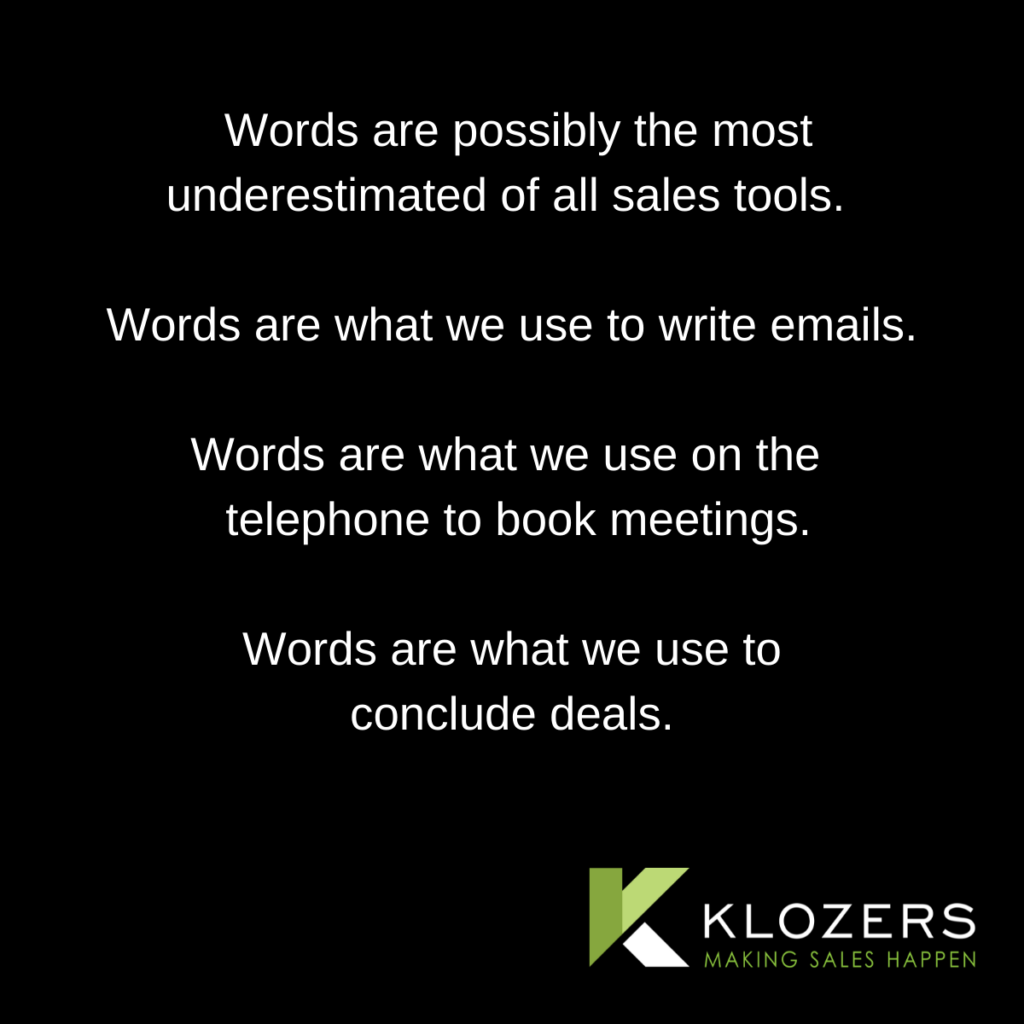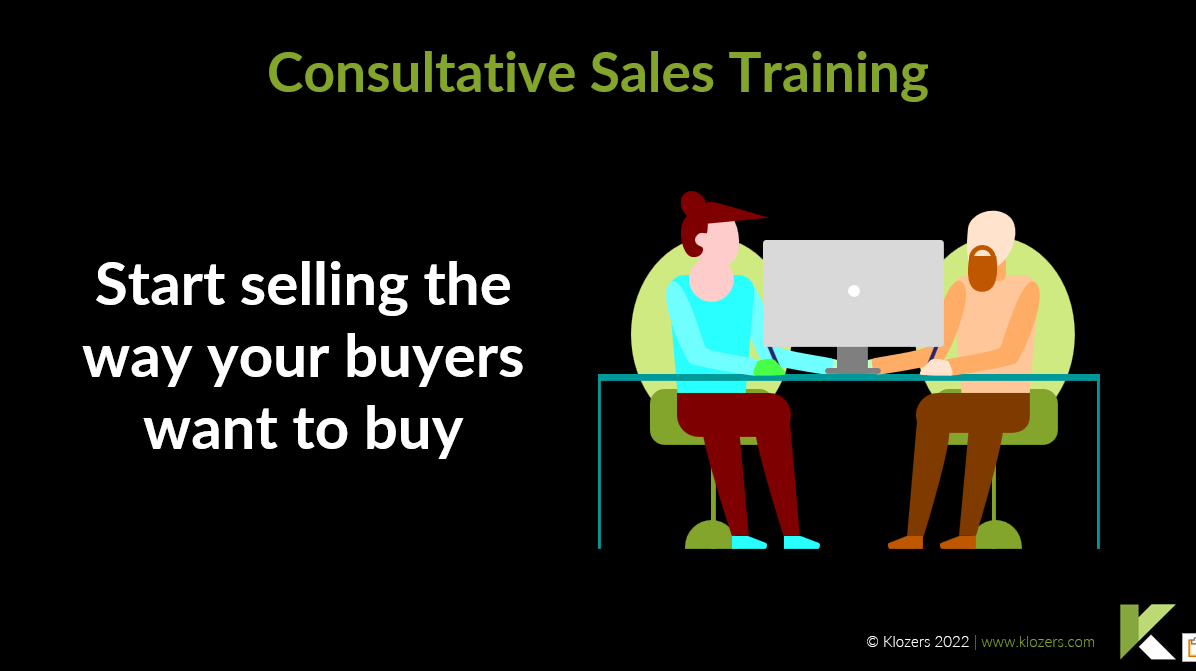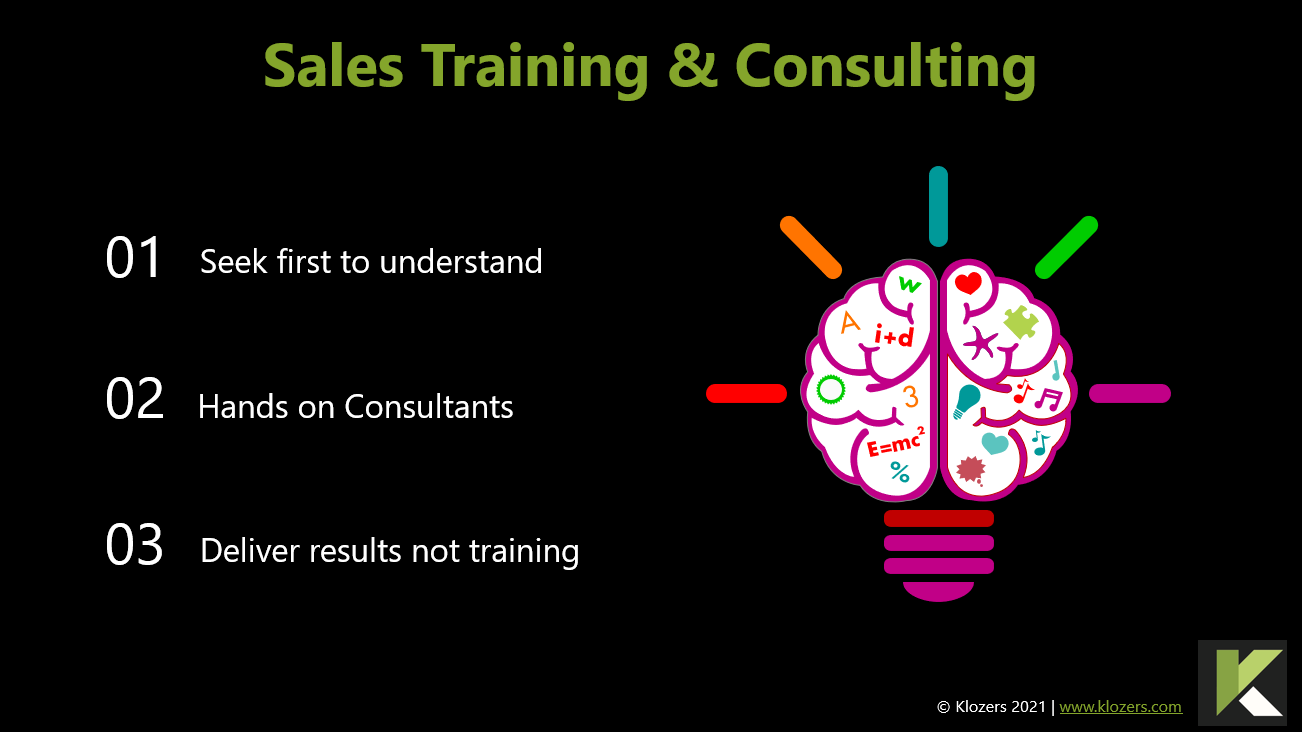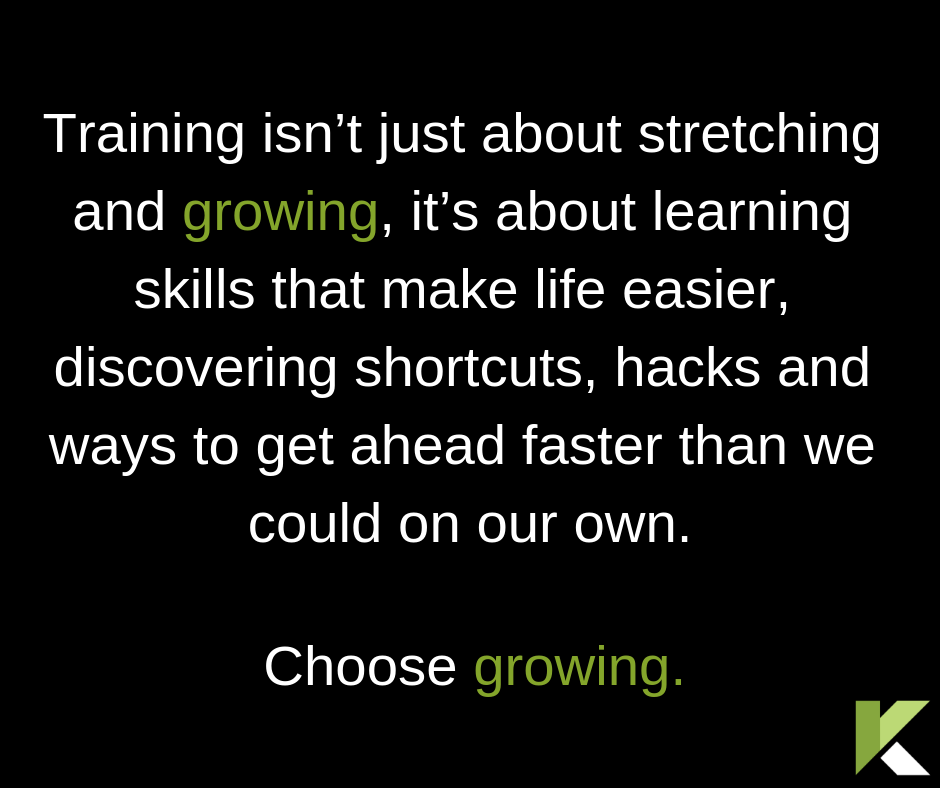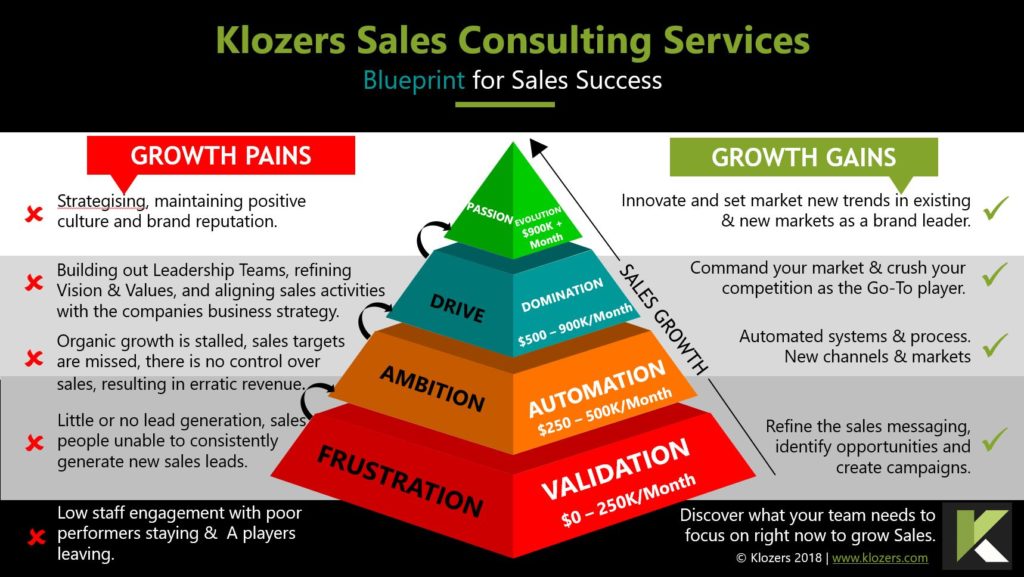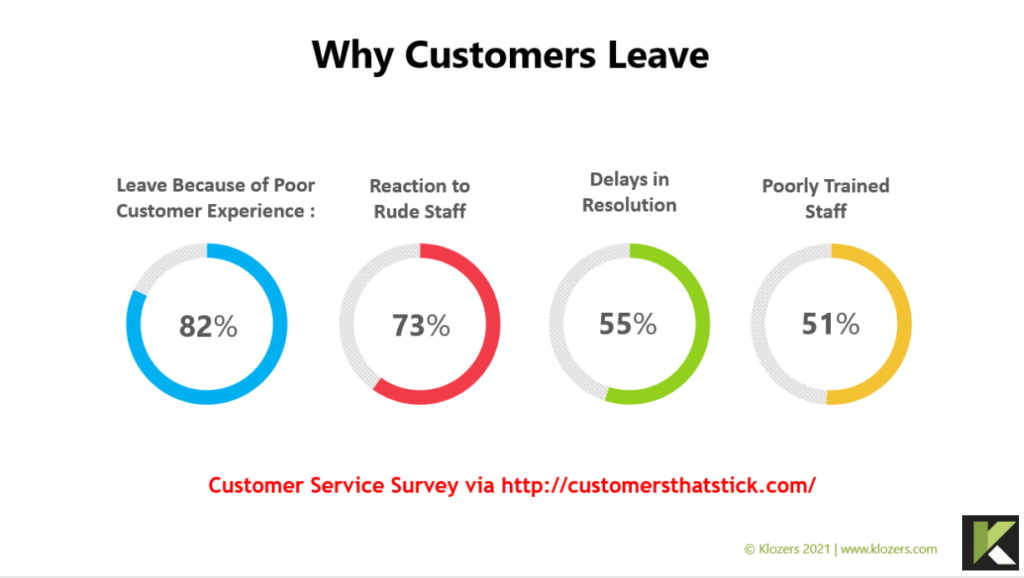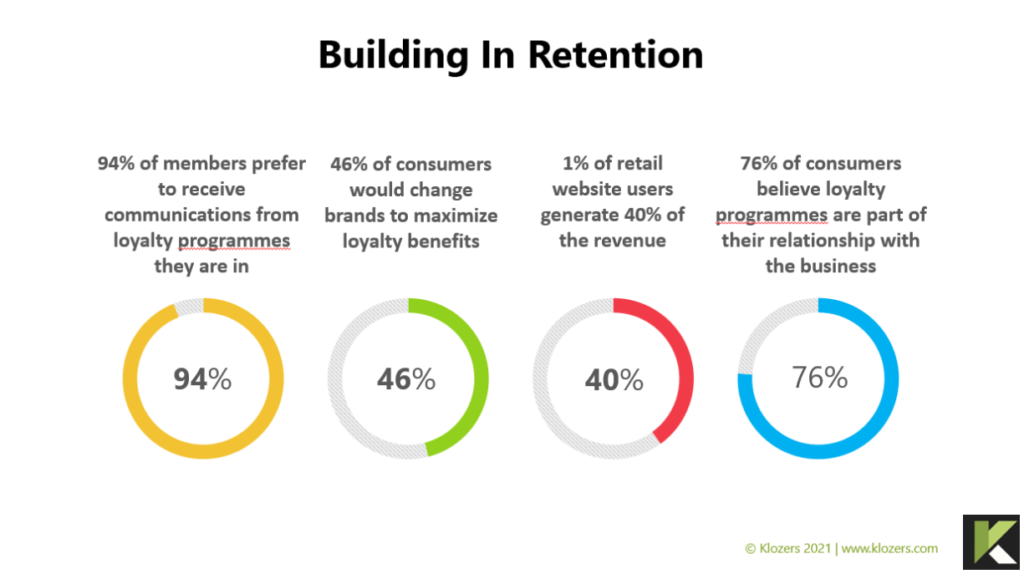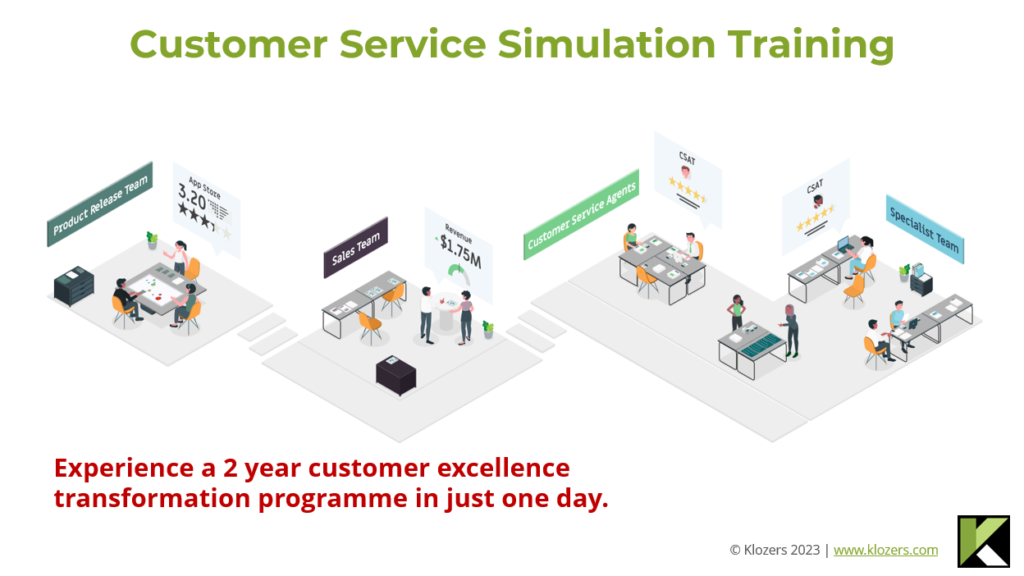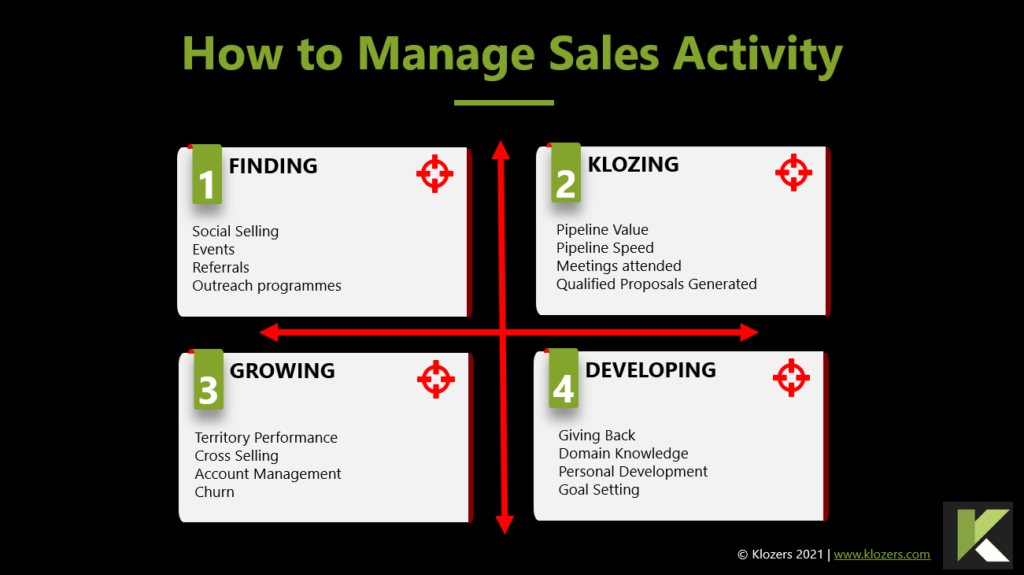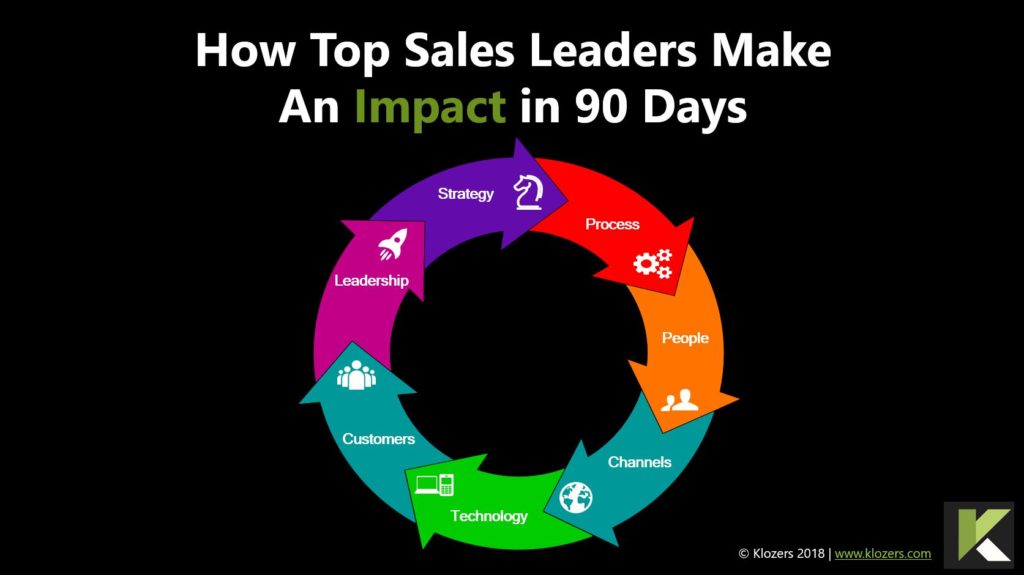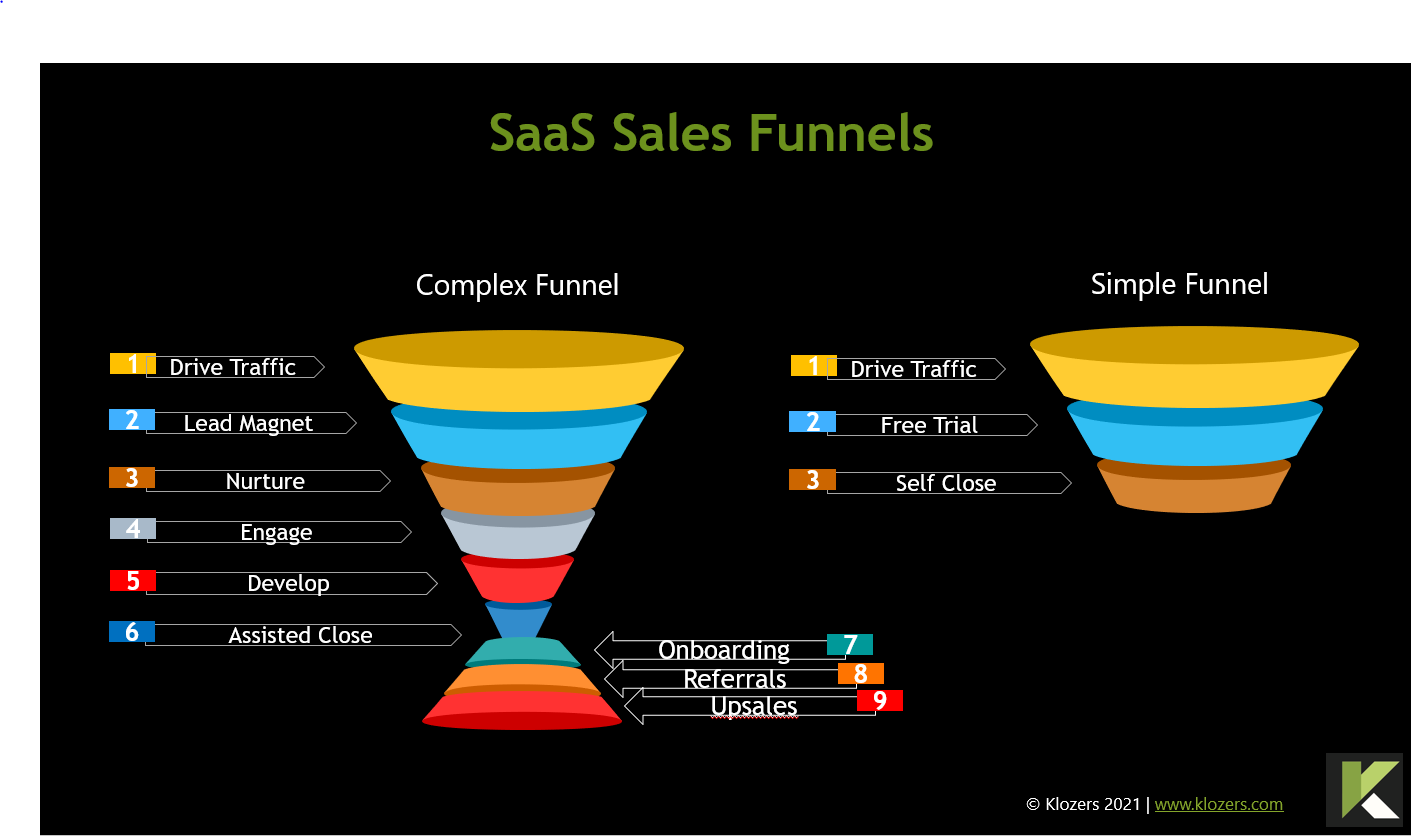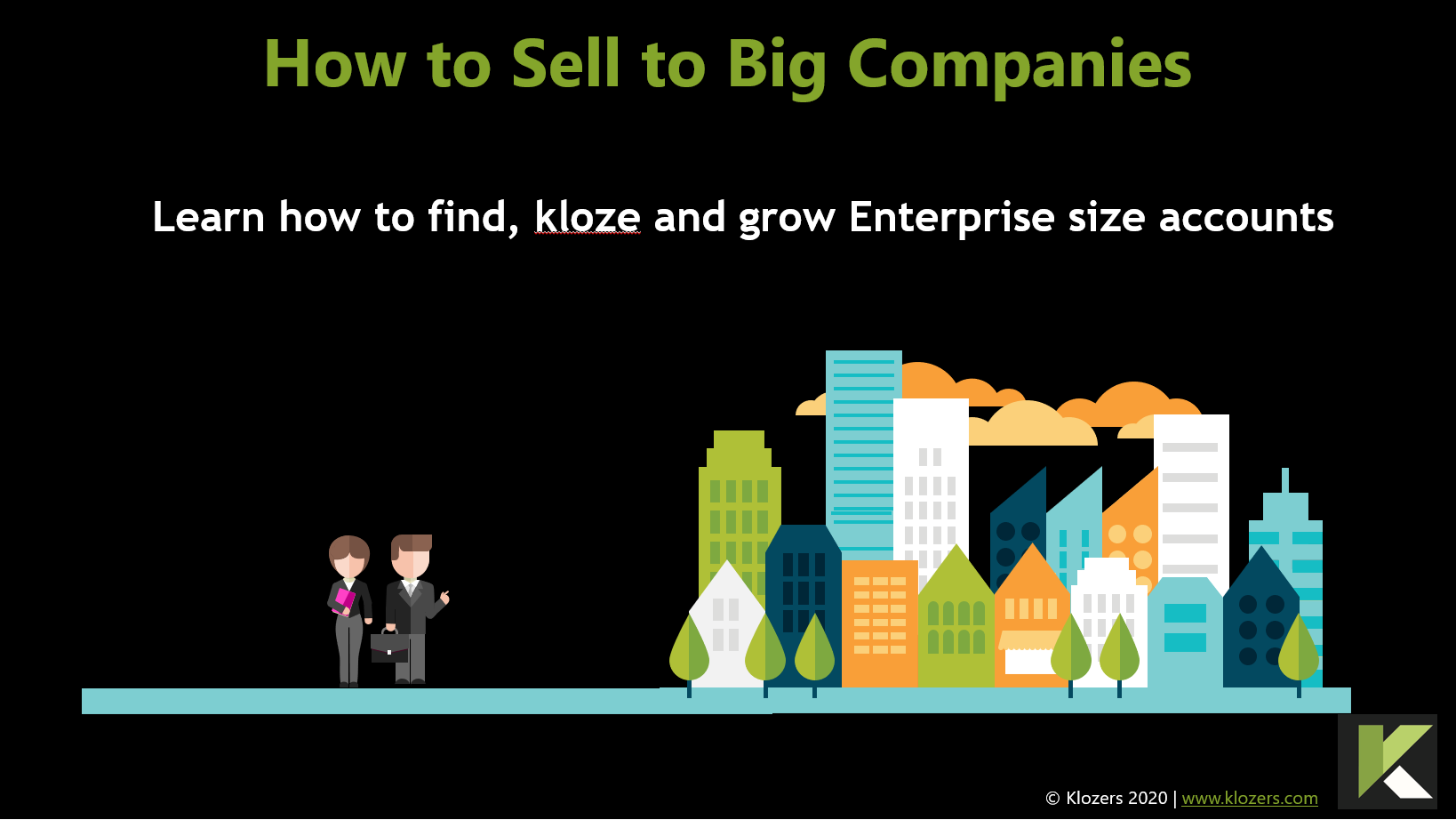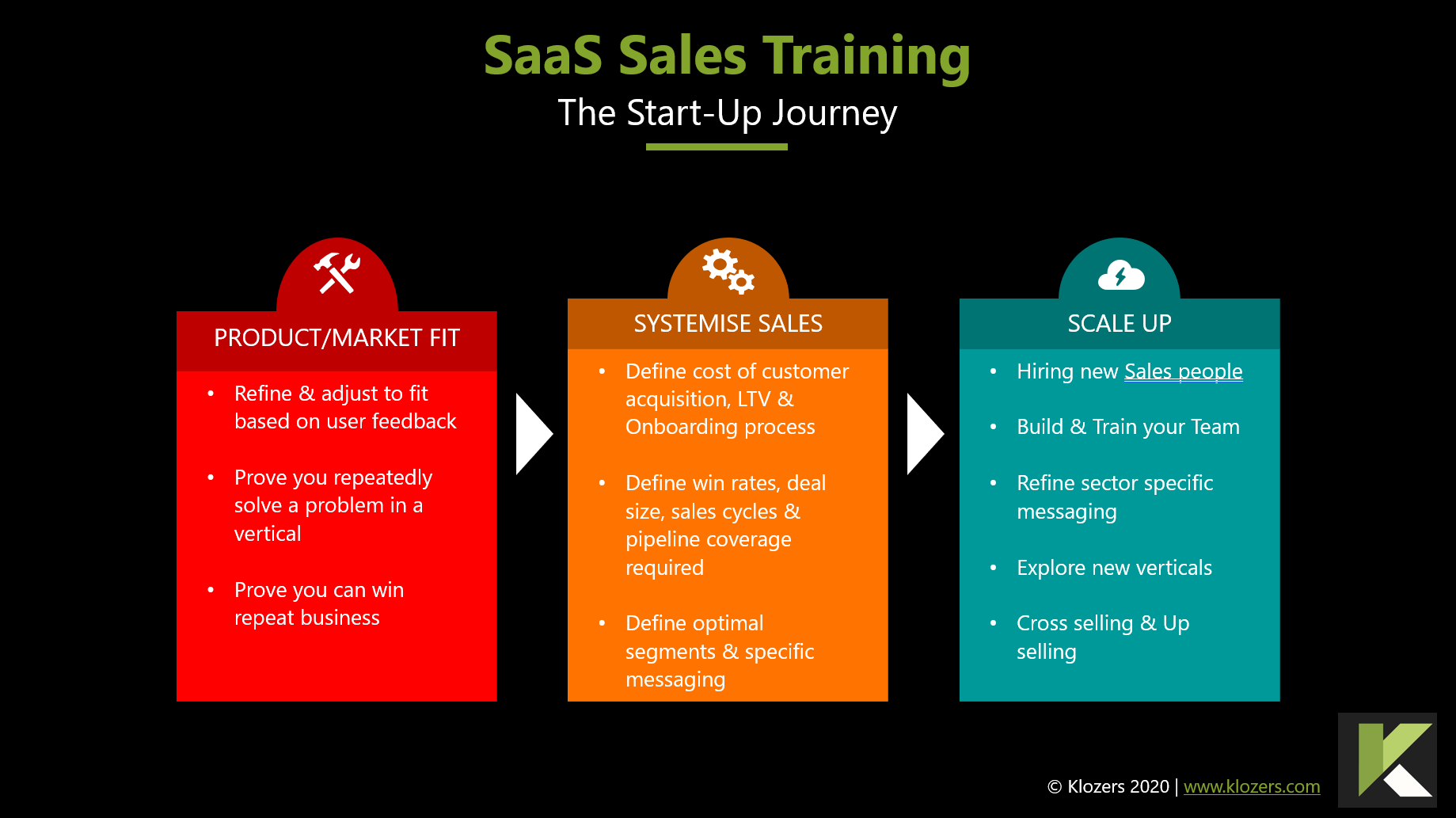Verkooptrainingen
Deze categorie van onze inhoud is gericht op verkoop trainingen
Sales Negotiation Training
Key Negotiation Skills – Introduction
There is a common misconception that sales negotiation skills are only required towards the end of the sales process. The part in every sales process where costs and terms are agreed. Whilst this is undoubtedly true, it’s also true that the best salespeople are negotiating all the way through the sales process. In fact every Professional salesperson negotiates, every single day which is why it’s an important part of any training programme.
From negotiating with their children on what to have for breakfast, to negotiating with a Partner on where to go for dinner. In between times they will negotiate workloads with their line managers, negotiate meeting times with co-workers, negotiate dates & times for appointments with prospects and lastly negotiating sales contracts, project delivery and aftercare contracts. In short, Negotiation is actually unavoidable, and the ability to Negotiate is a core skill for every Salesperson.
Planning for Sales Negotiations
Like most things in life when it comes to Negotiation knowledge is power. The more information you have and better prepared you are then the more likely you will achieve a successful negotiation. Follow the information below to discover how to research and plan your next negotiation.
Sales Negotiation Goals
These are the needs, wants and desires of the parties involved in the negotiation. In business this can be complicated as not only may both sides have differing goals, but parties within each side may have differing and even conflicting Goals.
Goals can be subjective for example “We need to increase the confidence of our people.” or they can be more objective like “We need to reduce our overheads by 10 this quarter”. Either way it’s important to know both your own Goals and that of the other side. Important questions you must ask are:
- Have we identified all the Goals?
- What are the Prioritised Goals?
- What are the Business Goals?
- What are the Personal Goals?
- Are there conflicting Goals?
| Business Goals Examples | Personal Goals Examples |
| Strategic | Security |
| Change | Satisfaction |
| Growth | Peer Pressure |
| Improvement | Financial Gain |
Please note Goals are NOT the same as outcomes.
Example:
Goals – George is 65 years old and would like to retire (Goal). In order to fund his retirement he needs to sell his business but no one wants to invest a large sum of capital. Mike would like to buy a business (Goal) but does not have any capital to invest.
The Outcome is the Negotiated agreement that they come to.
Negotiation Options
These are all the possible solutions that satisfy the goals of both parties. They are all possibilities that both parties agree or say Yes to.
By investing time to explore all the Options then you are more likely to find:
- Alternative solutions
- Enable both parties to achieve their goals
- Reach the Best Possible Agreement (BPA)
Example:
Goals – George is 65 years old and would like to retire (Goal). In order to fund his retirement he needs to sell his business but no one wants to invest a large sum of capital. Mike would like to buy a business (Goal) but does not have any capital to invest.
Option – George can sell his business to Mike but rather than invest a lump sum he agrees to pay George on a Monthly basis from the profits for the next 5 years and hence fund his retirement.
Criteria for Negotiation
Criteria are the “terms” of any possible Option
Example:
Goals – George is 65 years old and would like to retire (Goal). In order to fund his retirement he needs to sell his business but no one wants to invest a large sum of capital. Mike would like to buy a business (Goal) but does not have any capital to invest.
Option – George can sell his business to Mike but rather than invest a lump sum he agrees to pay George on a Monthly basis from the profits for the next 5 years and hence fund his retirement.
Criteria – George needs to guarantee a minimum payment every month regardless of the profitability of that month. Mike needs to ensure ensure he will not be liable for any warranty, liability or compensations claims from the period before he take responsibility/ownership of the business.
Get expert Sales Negotiation Training from our Sales Coaches
CNA – Cost of No Agreement
Not all Negotiations end in an agreement, it is therefore vital before entering into any Negotiation that you first work out what the Cost of No Agreement is for both parties. The costs of no agreement can be both Objective and Subjective.
Example:
Goals – George is 65 years old and would like to retire (Goal). In order to fund his retirement he needs to sell his business but no one wants to invest a large sum of capital. Mike would like to buy a business (Goal) but does not have any capital to invest.
Option – George can sell his business to Mike but rather than invest a lump sum he agrees to pay George on a Monthly basis from the profits for the next 5 years and hence fund his retirement.
Criteria – George needs to guarantee a minimum payment every month regardless of the profitability of that month. Mike needs to ensure ensure he will not be liable for any warranty, liability or compensations claims from the period before he take responsibility/ownership of the business.
CNA – George does not have the financial resources to retire (Objective) however he has been trying unsuccessfully to sell his business for three years and is now desperate (Subjective) for a solution. Mike is keen to buy a business (Objective) but knows there are hundreds of businesses for sale and he is pretty relaxed (Subjective) if this deal doesn’t go through another one will come along.
The Subjective Cost of No Agreement can be more powerful than the Objective ones as people make decisions emotionally and then justify their position intellectually afterwards.
BATNA – Best Alternative to No Agreement
Not all Negotiations end in an Agreement, it is therefore vital before entering into any Negotiations that you first work out what the Best Alternative to No Agreement is. In some cases you may well experience that the other party is so entrenched in their position that they have no desire to Negotiate. BATNA is typically but not always, an alternative course of action that can be taken if no agreement is reached.
BATNA helps you prepare for a Negotiation by:
- Helps prevent you from agreeing to something you will regret
- Defining your Minimum Possible Agreement (MPA)
- Provides you with a Plan B
- Helps prevent you from over or underestimating the your own and the other party’s position
- Helps you understand where the leverage is
- Identifying alternative Options
Example:
Goals – George is 65 years old and would like to retire (Goal). In order to fund his retirement he needs to sell his business but no one wants to invest a large sum of capital. Mike would like to buy a business (Goal) but does not have any capital to invest.
Option – George can sell his business to Mike but rather than invest a lump sum he agrees to pay George on a Monthly basis from the profits for the next 5 years and hence fund his retirement.
Criteria – George needs to guarantee a minimum payment every month regardless of the profitability of that month. Mike needs to ensure ensure he will not be liable for any warranty, liability or compensations claims from the period before he take responsibility/ownership of the business.
CNA – George does not have the financial resources to retire (CNA) and has been trying unsuccessfully to sell his business for three years and is now desperate for a solution. Mike is keen to buy a business and has spent £3,000 with Solicitors and Accountants thus far completing his due diligence on the company.
BATNA – George is in discussion with his Lawyers to explore the possibilities of a Management Buyout for the business. Mike knows there are hundreds of businesses for sale and he is pretty relaxed if this deal doesn’t go through another one will come along.
Concessions for Negotiation
A concession is something given to the other party in furtherance of the agreement. These concessions should be identified in advance and segmented for both parties in terms of:
High Value – High Cost
High Value – Low Cost
Remember – Never give anything away without receiving something of equal or greater value in return.
Example:
Goals – George is 65 years old and would like to retire (Goal). In order to fund his retirement he needs to sell his business but no one wants to invest a large sum of capital. Mike would like to buy a business (Goal) but does not have any capital to invest.
Option – George can sell his business to Mike but rather than invest a lump sum he agrees to pay George on a Monthly basis from the profits for the next 5 years and hence fund his retirement.
Criteria – George needs to guarantee a minimum payment every month regardless of the profitability of that month. Mike needs to ensure ensure he will not be liable for any warranty, liability or compensations claims from the period before he take responsibility/ownership of the business.
CNA – George does not have the financial resources to retire (CNA) and has been trying unsuccessfully to sell his business for three years and is now desperate for a solution. Mike is keen to buy a business and has spent £3,000 with Solicitors and Accountants thus far completing his due diligence on the company.
BATNA – George is in discussion with his Lawyers to explore the possibilities of a Management Buyout for the business. Mike knows there are hundreds of businesses for sale and he is pretty relaxed if this deal doesn’t go through another one will come along.
Concessions – George is prepared to spend 3 months of his time ensuring during the handover period which is Low Cost to him as he will be retired but High Value to Mike as he is new to the industry and recognises the benefit of George’s experience.
Mike is prepared to move quickly which has no cost to him however this is High Value to George as the last thing he wants is a long protracted sale.
Negotiation Strategies
Aggressive Tactics
- Shoot the hostage
- This strategy is extremely aggressive as it involves an immediate offer to walk away with no deal which is designed to throw and unsettle the other party. This is often delivered in a reluctant tone “we don’t want to do this but…”,
- Delaying tactics
- When time is clearly on one parties side the process can often be deliberately slowed which is extremely effective when there are cost implications if talks over run. This tactic also applies if the other party has another meeting or needs to leave. The negotiator deliberately talks around the subject to delay the real conversation and then uses time to put pressure on the other party to come to an agreement.
- Poor Me
- This strategy is used to play the false victim that needs rescued by the other party.
- Last Minute.com
- As the name suggests this strategy involves the Negotiator agreeing to a solution right up until they are required to sign and then withdrawing. The withdrawal is usually followed up quickly with a counter offer at dramatically reduced terms.
- Misleading/lying
- Often Negotiators will make exaggerated claims or even lie so without hard data to support them you should discount these. They may also issue warnings and threats or make matters personal to unbalance you.
- Missing People
- Everyone knows the importance of having all the Decision Makers in the room but Negotiators may even turn up with complete strangers. In sales some companies will remove Sales People from the final negotiations. If the Sales People have a relationship with the other party they could be more empathetic and weaker negotiators. Turning up without warning with complete strangers also unbalances the other party.
Co-operative Tactics
- Agree on the Process
- Spend time up front agreeing the process and format of the Negotiations including what’s in scope and what’s not.
- Win Win Agreements
- Most professional Negotiators accept that any final agreement must be fair and sustainable for the life of the time period. In most business scenarios it should never be win at all costs as this destroys relationships.
- Matching Rights
- Offer the other party the right to match any solution that you receive. For example if one of two business partners decides to sell their shares to another party they may have the agreement that the other party gets first refusal if they match the offer.
- Contingent Agreements
- These are simply agreements based on future events. Financial Bonus may be tied to Performance. Football transfer fees can be include Contingent Agreements that provides the selling club additional revenue if a player is sold on and or if a player is capped by their country or simply makes a certain number of appearances.
- Multiple Offers
- When multiple offers are placed on the table this allows both parties to indicate preferences and encourages creativity as a winning hybrid offer can be formed. Placing one offer on the table often leads to a refusal and a stall in the process.
Sales Negotiation Checklist
1. Be prepared to walk away. Sales Negotiation is 70% Mindset and 30% Strategy and unless you are prepared to walk away, no strategy will help you.
2. It’s not what you charge it’s what your worth. Thoroughly research the market and discuss with the buyer the Value you bring to the table?
3. Take council from colleagues and external advisors and agree a pre-meeting strategy for the negotiations then PRACTICE.
4. Never give anything away without receiving something of equal or greater value in return.
5. Never enter a Negotiation without first providing your price and outline terms in advance, to anchor the prospect to a higher number and terms.
6. Where possible in high value deals do not include your sales people in Negotiations, as they will be emotionally involved in the sale and not objective.
7. Ensure everyone in your team have agreed in advance your trade-offs, your concessions, and your best alternative to a negotiated settlement.
8. You must be comfortable with silence and at most only talk 30% of the time, as the more you talk the more information you are giving away.
9. If it’s not Win Win then you run the danger of the prospect backing out or failing to implement your agreement, then the lawyers are the only winners.
10. Negotiation is between human beings, you must therefore be familiar with Human Psychology, DiSC, Neuro Linguistic and Programming.
Hoe bouw je een SaaS-verkoopkanaal
1. Wat is een Sales Funnel?
Een sales funnel is een opeenvolging van acties, gebeurtenissen of stadia die een gebruiker doorloopt voordat hij een product of dienst koopt. Sales funnels zijn ontworpen om marketeers in staat te stellen het verkoopproces te volgen, vast te leggen en te optimaliseren om de resultaten te verbeteren.
U kunt hier meer te weten komen over onze SaaS sales training.
2. Hoe bouw je een SaaS verkoop trechter
Uw SaaS sales funnel is een essentieel onderdeel van uw Apps succes. Als je SaaS-apps aanbiedt, is het creëren van een herhaalbare, schaalbare en traceerbare sales funnel een van de belangrijke stappen die je moet nemen.
Klinkt makkelijk? Denk dan nog eens na. De sales funnel is het punt waar veel start-ups die overgaan op het genereren van inkomsten moeite mee hebben, en in veel gevallen falen.
Voordat u begint met het bouwen van uw funnel is het de moeite waard om eerst te overwegen waar u zich bevindt in uw app reis.
3. De drie hoofdfasen van SaaS-ontwikkeling
Helaas is er in de verkoop nooit een pasklare oplossing, en het startpunt voor het bouwen van een SaaS-verkoop funnel is afhankelijk van waar je bent, in termen van de drie belangrijkste fasen van een SaaS-business?
Ben je bij:
Fase 1: het begin van de reis waarbij de stichter en het primaire team nog bezig zijn om de product/markt fit vast te stellen.
Fase 2: de oprichter en de leden van het eerste team hebben bewezen dat het product en de markt bij elkaar passen en bewijzen dat zij systemen en processen kunnen implementeren die anderen kunnen gebruiken om te verkopen.
Fase 3, de laatste horde waarin u een bewezen product-markt fit hebt, u de juiste systemen en processen voor schaalvergroting hebt geïdentificeerd en bewezen en u nu klaar bent om uw verkoop te schalen, u te concentreren op klantenwerving en uw MRR op te bouwen.
De strategieën die je gebruikt voor het bouwen van een SaaS sales funnel zullen variëren afhankelijk van wat je precies geleerd hebt in stap 1 hierboven.
Voor deze oefening ga ik er dus van uit dat u bij stap 1 bent. Als je nog steeds moeite hebt om een sales funnel op te bouwen bij stap 2 en 3 dan heb je ofwel iets gemist bij stap 1 of er is iets veranderd waardoor alles wat je geleerd hebt bij stap 1 niet meer werkt.
4. Bouw een marketing funnel voor uw sales funnel
Bij elk bedrijf is het belangrijk dat u de optimale omstandigheden creëert voor uw verkoopteam om succesvol te zijn. In de SaaS-wereld is het niet genoeg om een goede website te hebben, je hebt een website nodig die:
a) gevonden kunnen worden door uw producten en diensten in de belangrijkste zoekmachines – Google, Bing, Yahoo & YouTube
b) kan worden gevonden door de problemen die u oplost in de grote zoekmachines – Google, Bing, Yahoo & YouTube
c) webverkeer kan omzetten in marketing gekwalificeerde leads
Veel bedrijven negeren dit en haasten zich om een outbound sales team op te bouwen. Het is een feit dat elke potentiële prospect die uw outbound Team interesseert, vervolgens naar uw website zal gaan om verder onderzoek te doen.
Tenzij de webervaring gelijk is aan of groter dan de ervaring van de prospects met uw outbound team, zullen zij onmiddellijk afhaken.
Om een marketing funnel op te bouwen moet je “dwingende user first content” creëren. Dit is inhoud waarnaar de gebruiker actief op zoek is, niet de inhoud die uw verkoop- en marketingteam willen pushen.
Uw SaaS marketing funnel is een essentieel onderdeel van uw Inbound verkoopstrategie. Om dit met succes te doen, moet u in elke fase van het kopersverloop inhoud van hoge kwaliteit creëren, zoals hieronder wordt weergegeven.
De inhoud moet subtiel uw merkverhaal vertellen en het succes dat u aan andere gebruikers hebt gebracht . Maak van je early adopters de helden, niet van jou.
TOFU – Top van trechter
Het eerste deel van uw sales funnel, ook bekend als TOFU, is de bewustwordingsfase van de funnel. De prospect is zich bewust van de problemen die hij heeft en zoekt naar oplossingen.
Uw website moet inhoud hebben die op deze problemen ingaat en uw bedrijf positioneren als de Subject Matter Experts. De meest populaire inhoud hier zou zijn:
Hoe te gidsen
Uitleg video’s
Blog berichten
Lead Magneten
In dit stadium bevindt de prospect zich in de onderzoeksmodus, niet de koopmodus, en is hij gewoon informatie aan het verzamelen.
Uw prospect is in dit stadium misschien niet eens geïnteresseerd in oplossingen, omdat hij nog steeds probeert zijn eigen problemen nauwkeurig zelf te diagnosticeren. Het is onwaarschijnlijk dat uw prospect in dit stadium met de verkoopafdeling zal willen praten.
Wij raden u aan marketingautomatisering te gebruiken om bij te houden op welke artikelen/pagina’s uw prospects de site binnenkomen, aangezien dit het probleem is dat hen het meest bezighoudt. Dit weten kan het voor sales makkelijker maken om een relevant gesprek met hen te voeren.
U kunt er ook in slagen de prospect te benaderen met chatbots op uw site, maar velen zullen in dit stadium anoniem willen blijven.
Midden van trechter
Het midden van uw verkooptrechter is wanneer prospects specifieke oplossingen beginnen te evalueren op basis van wat ze in fase 1 hebben geleerd. Midden in de trechter inhoud zou omvatten:
Presentaties
Demonstraties
Casestudies
In de praktijk zullen zij een soort shortlist van potentiële leveranciers hebben opgesteld, en vervolgens zullen zij dieper ingaan op de details van elke potentiële oplossing.
In dit stadium is het mogelijk dat de prospect nog steeds geen contact met u opneemt, aangezien hij vaak gewoon onderzoek doet namens andere mensen binnen zijn eigen organisatie en zijn prioriteit nog steeds bij het verzamelen van informatie ligt.
Bodem van trechter
Tegen de tijd dat uw prospect de bodem van uw marketing funnel heeft bereikt, hebben zij in veel gevallen al “gekocht” in een bepaalde leverancier of oplossing.
Zij hebben hun beslissing grotendeels genomen op basis van hun webervaring met het merk, uw verkoopboodschap en uw vermogen om uzelf niet alleen als een echter leider te positioneren, maar als een thought leader in die hun problemen begrijpt.
Bottom of Funnel inhoud zou omvatten dingen zoals:
Prijsstelling
Vergelijkende tabellen
Getuigenissen
Recensies
Voor de eenvoudigere, goedkopere oplossingen zult u merken dat ze nu bereid zijn om de proef op de som te nemen als u een sterke Call to Action (CTA) aanbiedt, terwijl ze voor de duurdere en complexere oplossingen nu zullen overgaan tot verkoop.
De afbeelding hieronder toont waar een eenvoudige marketing funnel overgaat in een winkelwagen en de meer complexe B2B verkoop overgaat in een lead voor verkoop.
Succes zit niet in het kiezen van het juiste model, maar in het bouwen van je eigen model op basis van gegevens en trial and error.
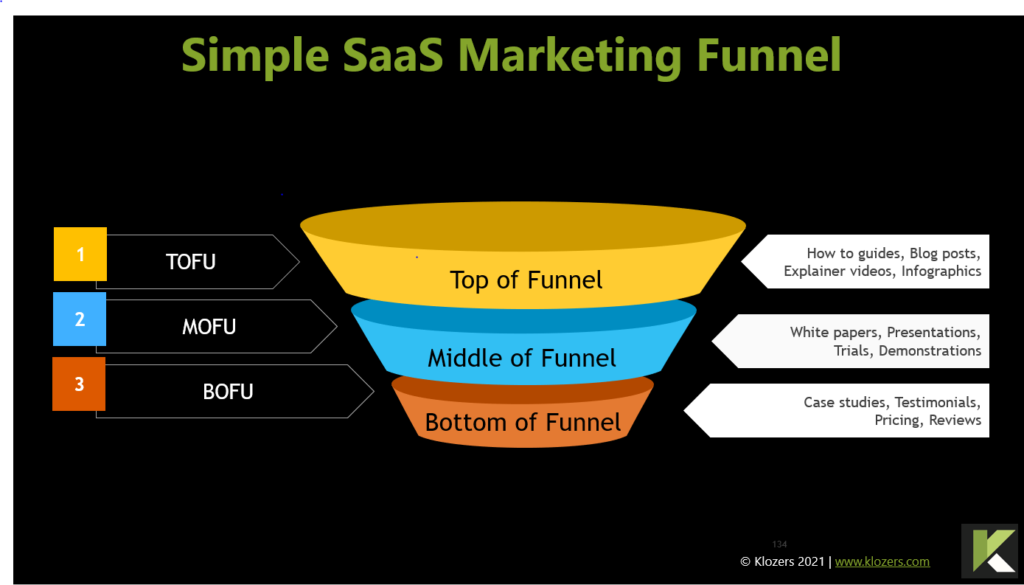
De meeste marketingsoftware houdt nu het gebruikersgedrag op uw website bij en kan lead scoring gebruiken om verkopers te waarschuwen wanneer het beste moment is om prospects proactief te benaderen.
Uit onze eigen ervaring blijkt dat de timing bijna altijd te vroeg is en dat een goed gedefinieerd lead-nurturingprogramma even doeltreffend is.
Om dit te doen moet u in uw marketing ten minste drie verschillende leadmagneten inbouwen waarmee u van uw webbezoekers een abonnee kunt maken zodat u contact kunt houden.
5. Reclame om uw Sales Funnel te vullen
Veel bedrijven vullen met succes hun sales funnel via reclame. Digitaal adverteren is volwassen geworden tot een niveau dat aanzienlijke tracking en rapportage mogelijk maakt, zodat u binnen een paar weken kunt begrijpen wat uw conversieratio en CAC zullen zijn.
In eerste instantie zouden wij pleiten voor “Re-targeting Campaigns”. Dit is gewoon het proces van het plaatsen van advertenties voor mensen die uw website al hebben bezocht.
Studies tonen aan dat retargeting zeven keer effectiever is dan nieuwe campagnes en daarom pleiten wij hiervoor als startpunt.
Deze strategie werkt uitermate goed met een sterke content marketing campagne. Het populairste toevoegkanaal voor B2B is LinkedIn, maar veel bedrijven hebben het ook goed gedaan met Facebook en Instagram.
Onnodig te zeggen dat dit wordt bepaald door uw publiek. Reclame kan worden gebruikt in eenvoudige trechters om de verkoop te stimuleren en in meer complexe trechters om nieuwe aanvragen voor verkopers te genereren.
Voor complexere verkopen kan een bepaalde volgorde nodig zijn waarbij gebruikers klikken op en adverteren voor het ontvangen van een leadmagnet, waarbij elke lead 3 dollar kost.
Als u er vervolgens in slaagt 5% van deze nieuwe leads om te zetten, kunt u per verkoop $60 uit reclame aan uw CAC toerekenen.
U kunt een traceerbare reeks of model van elke activiteit bouwen, niet alleen reclame. Bijvoorbeeld evenementen, webinars en telesales, zodat u kunt begrijpen welke activiteiten het meest kosteneffectief zijn, niet alleen voor het vullen van uw trechter, maar ook voor het daadwerkelijk converteren in orders.
6. Hoe bouw je een SaaS verkoop trechter
Uw sales funnel zal variëren afhankelijk van uw verkoopstrategie. Verkoopt u uw app rechtstreeks of via partners? Op welke kanalen heeft u besloten zich in eerste instantie te richten?
1. Identificeer uw Perfecte Prospect Profiel. Dit is de verkopers versie van een marketing persona. Het omvat alles wat een marketing persona zou omvatten, plus wat extra informatie die verkoop helpt om de prospect op een dieper niveau te begrijpen en met hem te communiceren.
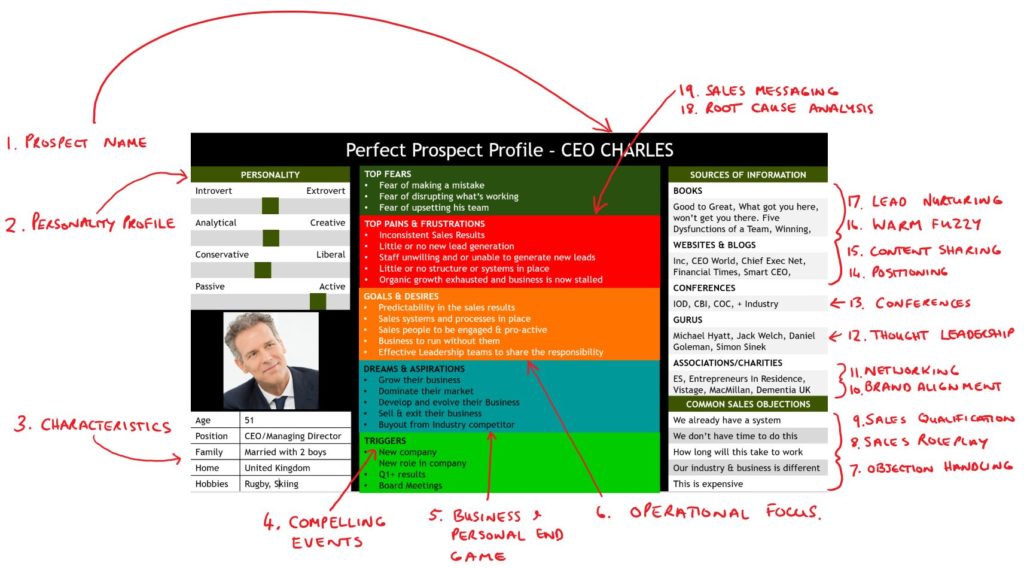
2. Bouw uw verkoopboodschap. Een deel van de product/markt fit is begrijpen welk zakelijk en of persoonlijk probleem uw product oplost.
Onze ervaring is dat de meest succesvolle SaaS-diensten bedrijfsoplossingen zijn die bedrijfsproblemen oplossen.
Zodra u begrijpt hoe dit zich verhoudt tot uw eigen product/dienst op een diep niveau, kunt u beginnen met het opbouwen van uw verkoopboodschap.
Dit zijn de woorden en genuanceerde taal waarvan u hebt bewezen dat prospects zich ermee verbinden. Het is niet genoeg om uw eigen bedrijf en oplossingen te kennen, u moet ook uw klanten kennen.
U moet precies weten hoe uw oplossing uw klant helpt geld te besparen, geld te verdienen en hun leven gemakkelijker te maken.
3. Lead Generation Campagne.
Zodra u uw doelprospects hebt geïdentificeerd en uw verkoopboodschap hebt opgebouwd, moet u beginnen te werken aan een Lead Generation-campagne.
Er zijn twee hoofdbenaderingen voor het genereren van leads:
a) Inkomende Leadgeneratie. Inbound lead generation campagnes zijn campagnes waarbij de prospect eerst contact met u opneemt. Zij kunnen een formulier invullen op uw webpagina, u bellen of u een e-mail sturen. Om inbound sales leads te genereren zult u een vorm van content creatie, advertentie campagnes, webinars, referral programma’s of SEO moeten doen.
b) Outbound lead generatie. Outbound lead generation campagnes zijn campagnes waarbij u prospects bereikt via telefoon, e-mail, direct mail, evenementen of account based marketing. Outbound campagnes betekenen steevast dat u een outbound says team moet samenstellen, wat duur kan zijn.
De meeste SaaS-bedrijven gebruiken een combinatie van inbound en outbound, maar bijna altijd ligt de nadruk meer op het ene dan op het andere.
Een zeer ruwe schatting is dat SaaS-diensten die goedkoper zijn en zich op het MKB richten, marketinggericht zijn en voornamelijk op inbound gericht zijn.
SaaS-diensten die zich meer richten op het middensegment van de markt en op ondernemingen, zullen een meer verkoopgerichte aanpak hanteren via Account Based Marketing.
7. Wat zijn de stadia van een SaaS-verkoopfunnel?

De fasen van uw sales funnel zijn eenvoudigweg een reeks stappen die uw prospects doorlopen om een bestelling te plaatsen.
Deze fasen kunnen sterk variëren en er is niet één trechter die je op elke app kunt toepassen. Zelfs als de fasen dezelfde zijn, kan de methode waarmee u prospects door de trechter laat bewegen, verschillen.
Uw verkooptrechter is een goede plaats om te beginnen met het verzamelen van gegevens om de prestaties te meten en na verloop van tijd verbeteringen aan te brengen.
In het algemeen moeten prospects zo snel mogelijk door de sales funnel bewegen – dit wordt de sales cycle of pipe speed genoemd.
Door de snelheid te meten waarmee prospects de cyclus doorlopen, kunt u blokkades in uw trechter identificeren en gebieden waar prospects vertragen.
Deze “knelpunten” zijn de plaatsen waar u verbeteringen moet aanbrengen.
8. Wanneer moet ik mijn SaaS-product aan klanten demonstreren?
De timing van SaaS app-demo’s binnen het verkoopproces is voor veel bedrijven onderwerp van discussie geweest.
Het antwoord op de vraag is helaas “dat hangt ervan af”. Veel bedrijven geven met succes een demo van hun app aan het begin van het verkoopproces, maar er zijn er evenveel die een demo geven aan het begin en dan hun prospects zien verdwijnen in het zwarte gat van voicemail en onbeantwoorde e-mails.
Kortom, hoe goedkoper en eenvoudiger de oplossing, hoe vroeger in het proces u een demo kunt geven en hoe duurder en complexer de oplossing, hoe verder in het verkoopproces de demo moet worden doorgeschoven.
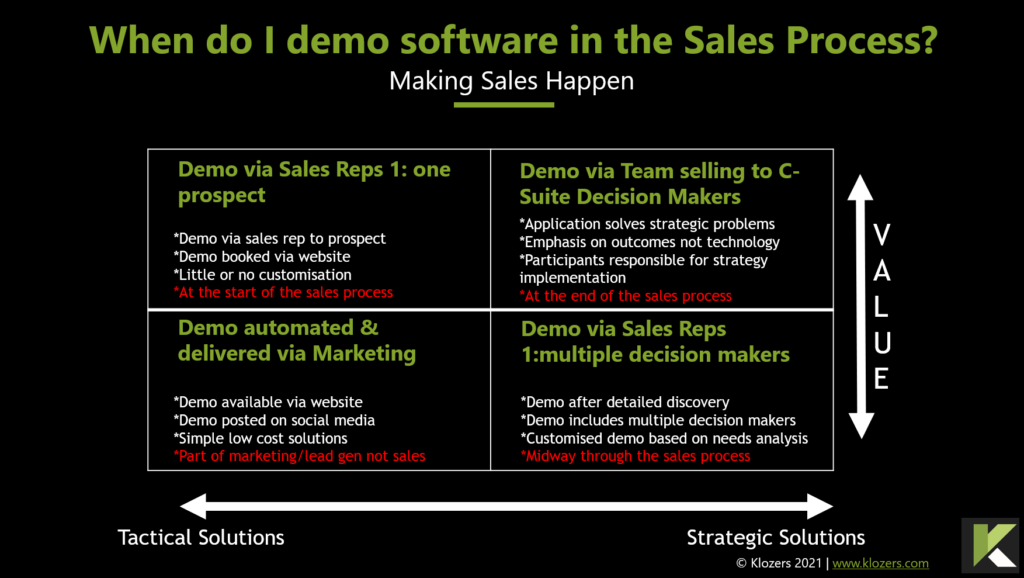
De realiteit is dat ondernemers en verkopers de neiging hebben om haastig een demo te geven van hun app, in de hoop dat de demo de prospect zal overtuigen om in te tekenen.
Zelfs als de prospect gekwalificeerd is en er een goede klik is, loopt een demo zonder enige vorm van diagnose van de pijn van de prospect het risico de prospect te verliezen.
Uw prospect moet weten dat u het weet en dat u hun wereld begrijpt. Dit kan alleen worden bereikt door intelligent en gericht te ondervragen. Als je de verkoop wilt versnellen, vertraag de verkoop dan.
De demo is meestal het grootste hefboomeffect van de verkoper en als u die te snel weggeeft, verliest u het hefboomeffect en naar alle waarschijnlijkheid de prospect.
Als algemene vuistregel geldt: plaats de app-demo zo ver mogelijk terug in uw verkoopproces.
Demo’s kosten tijd en geld, vooral bij complexe verkoop waarbij vaker wel dan niet een demo op maat nodig is.
Demonstraties op maat mogen alleen worden gegeven aan de hogere besluitvormers in het aankoopteam van de prospect. Indien nodig kunt u zelfs twee demo’s hebben binnen het verkoopproces – er zijn geen regels, behalve dat als het werkt, doe het dan.
De meeste verkopers maken de fout om dit deel van het verkoopproces te gebruiken om de voordelen van het product in meer detail uit te leggen.
Als je vertelt, verkoop je niet. Gebruik intelligente indringende vragen om de prospect te laten vertellen hoe de oplossing hun zakelijke pijn zal oplossen.
U moet vermijden te praten over kenmerken waarvan u denkt dat ze voor hen relevant zijn. Als u dit niet hebt ontdekt in de ontdekkingsfase van het verkoopproces, is het inherent riskant om verderop in het proces iets nieuws te introduceren.
Voor de eenvoudigere, goedkopere oplossingen zult u merken dat zij nu bereid zijn om een proefperiode te nemen, terwijl zij voor de duurdere en complexere oplossingen nu contact zullen opnemen met een verkoper.
Om aan te tonen dat zij de nodige zorgvuldigheid hebben betracht, zullen zij altijd met twee of drie potentiële leveranciers spreken.
Dit is niet noodzakelijkerwijs om een leverancier op prijs te verslaan, maar soms moeten zij aan de bredere inkoopgroep binnen hun organisatie duidelijk maken waarom zij een voorkeur hebben.
App trials zijn ook een goede manier om gebruikers over te halen zich aan te melden, maar de conversieratio van trials naar close is meestal slecht in de meeste SaaS-gevallen.
Afhankelijk van de prijsstelling zou u een beheerde proefperiode kunnen aanbieden, zodat zij uw software kunnen evalueren terwijl u hen verder in het verkoopproces begeleidt.
Tijdens een proef kan de prospect zien hoe het product voor hem in de praktijk zal werken. Het is belangrijk dat u de proef op het juiste moment neemt en dat u van tevoren afspreekt wat er gebeurt als de proef slaagt.
We hebben de bovenstaande grafiek gemaakt om te proberen visueel uit te leggen hoe dit voor uw organisatie zou kunnen werken.
In het voorbeeld zal het grootste deel van uw CAC uit marketing bestaan, terwijl in de meer complexe trechter uw kosten marketing, verkoop + klantenonboarding zullen omvatten.
9. SaaS-Verkooptrechter voorbeelden
De onderstaande verkoop funnels zijn voorbeelden. U moet deze NIET kopiëren tenzij ze passen in uw verkoopproces.
Ze zijn ontworpen als startpunt voor wie een verkooptrechter wil ontwikkelen.
Zoals u kunt zien in de grafiek, zijn er veel alternatieven voor de fasen waaruit uw sales funnel bestaat, afhankelijk van het type funnel dat u aan het maken bent.
Voor zuiver digitale trechters zou je kunnen hebben:
Lead Magnet Landing page – waar prospects terechtkomen nadat ze op uw advertentie hebben geklikt
Bevestigingspagina – bevestiging van uw gratis aanbieding, proefperiode of aankoop
Upsell-pagina – waar prospects een kans hebben om extra diensten toe te voegen of te upgraden
Afrekenpagina – waar prospects betalen voor de dienst
Felicitatie- of dankpagina – waar u prospects kunt aanmelden met de juiste volgende stappen.

10. SaaS-verkoop trechter metrieken
Als het op metrics aankomt, denken wij dat dit de gebruikelijke sales operations metrics en KPI’s zijn waar de meeste mensen mee vertrouwd zijn. Het spreekt voor zich dat deze gegevens belangrijk zijn en dat u ze moet registreren en erover moet rapporteren.
LTT – conversie van leads naar proeven
Dit is het aantal leads dat is geconverteerd naar een proef.
DCR – Demo conversie ratio
Het aantal demo’s dat succesvol converteert naar de volgende fase in het verkoopproces.
TTS – Omzetting van proef naar verkoop
Dit is het aantal prospects op de gratis proefversie die zijn omgezet in betalende klanten.
LTV – Lifetime Value van de klant
Dit is de gemiddelde totale waarde die een klant zal uitgeven voordat hij de dienst verlaat. Ironisch genoeg kan dit moeilijker te meten zijn naarmate uw product beter is, omdat u zonder klanten niet weet hoe lang zij blijven en wat hun totale waarde voor het bedrijf is.
Churn – Aantal klanten dat vertrekt
Klanten zullen weggaan en dat is niet altijd een slechte zaak. Als de klanten die weggaan passen in uw ICP (Ideal Client Profile) dan heeft u een probleem. Klanten die vertrekken en niet in uw ICP passen, kunnen waardevolle middelen vrijmaken die aan uw ICP kunnen worden besteed.
MRR – maandelijks terugkerende inkomsten
De maandelijkse terugkerende inkomsten geven u een overzicht van uw succes, maar het is slechts een overzicht en u moet kijken naar de details binnen de gegevens om een nauwkeuriger beeld te krijgen.
ARR – Jaarlijkse terugkerende inkomsten
De jaarlijkse recurrente inkomsten geven een goed beeld van de onderneming, maar net als de MRR moet u alle gegevens bestuderen om een nauwkeuriger beeld te krijgen van de gezondheid van uw onderneming.
Verkoopcyclus – de tijd vanaf het eerste contact tot en met een gesloten order
Dit is meestal kort voor eenvoudigere oplossingen met een lagere waarde en langer voor complexe bedrijfsverkopen. Een verkoop aan een Tier 1 bank kan bijvoorbeeld 18 maanden duren van het eerste contact tot de afsluiting.
CAC – kosten voor klantenwerving
Het is belangrijk te begrijpen hoeveel het u kost om één enkele klant te werven. In een ideale wereld zou u dit ontdekken in de eerste fasen van het bedrijf, wanneer u het waardevoorstel bewijst. Zonder dit cijfer is het onmogelijk de systemen en processen in te voeren om het bedrijf te laten groeien, aangezien u niet weet hoeveel u kunt besteden aan marketing en verkoop aan de voorkant.
Negatieve Churn –
Negatieve churn is een krachtige groeimetriek die aangeeft dat de inkomsten uit upselling en cross selling van bestaande klanten opwegen tegen de inkomsten die verloren gaan wanneer klanten vertrekken.
11. Ingediende SaaS-voorstellen
Na de laatste demo, moet je nooit aanbieden om een voorstel te sturen.
Voorstellen kosten tijd en geld en als uw prospect geïnteresseerd is , zal hij u om een voorstel vragen.
Als uw prospect u niet om een voorstel vraagt, betekent dit dat hij niet geïnteresseerd is in een samenwerking met u en dat u terug moet gaan in het verkoopproces om te begrijpen waar u de fout bent ingegaan.
Wanneer het verkoopproces vastloopt, is dat zelden te wijten aan iets wat u op dat moment verkeerd hebt gedaan – vaker is het iets wat u eerder in het verkoopproces hebt gemist.
Zorg ervoor dat u er zeker van bent dat alle voordelen van de software duidelijk aan hen zijn uitgelegd en in kaart zijn gebracht in het licht van hun aangegeven behoeften.
Indien mogelijk, vraag uw Witte Ridder altijd om u te helpen bij het opstellen van het voorstel, en controleer samen met hem of haar een conceptversie voordat u het officiële exemplaar verstuurt.
Voordat u uw voorstel verstuurt, moet u een duidelijk beeld hebben van wat de volgende stappen zijn als u wint of verliest.
Zonder dit is de kans groot dat je de komende drie maanden achter spoken in voice mail aan zit.
12. Prijsbepaling van uw SaaS-contracten
Veel bedrijven vermelden weinig of geen prijzen op hun website omdat zij niet willen dat hun concurrenten hun prijzen zien, of omdat zij denken dat het potentiële klanten zal afschrikken.
Je moet trots zijn op je prijs en de waarde die je brengt. Laat de concurrentie u ondermijnen en al hun middelen inzetten op onrendabele deals.
Mensen kopen zelden de goedkoopste oplossing, dus sta uw prospects toe u te onderbieden.
Als u nog steeds angstig over het hebben van uw prijzen op uw website dan na te denken over hoe je je voelt als je het onderzoek van een oplossing die u geïnteresseerd bent in alleen te vinden de prijs pagina is bezaaid met POA.
Als u zoals de meeste mensen bent, vindt u dit echt vervelend en gaat u snel naar de volgende potentiële leverancier.
Ten slotte is een ander voordeel van het met trots tonen van uw prijzen dat het iedereen die niet bereid is op dat niveau te investeren, eruit kwalificeert.
Dit kan u veel tijd en middelen besparen bij prospects die gewoon een ander budgetniveau hebben.
Er zijn tal van prijsstrategieën voor u beschikbaar, maar uit onze ervaring blijkt dat het enige wat gegarandeerd is, is dat u uw prijsstelling zult wijzigen.
Als vuistregel geldt dat als uw prijzen te hoog zijn voor een kortlopend contract of een betaalde proefperiode, de kans bestaat dat de prospect niet alle voordelen van de software zal ervaren voordat het contract afloopt, en dat hij zal besluiten niet te verlengen.
Waar mogelijk moet u prospects tijdens de proefperiode belonen voor het toevoegen van informatie en het gebruik van de dienst.
Bied bijvoorbeeld een kortere proefperiode aan en geef gebruikers een beloning als ze hun profiel/account volledig hebben ingesteld.
Bied een extra gratis periode aan om hen aan te moedigen het product te gebruiken, bijvoorbeeld als zij gegevens uploaden in het systeem.
Het idee is om uw nieuwe gebruikers stap voor stap te “onboarden” en uw product zo kleverig mogelijk te maken.
Als de prospect toch wil doorgaan, moet u contracten met digitale handtekening gebruiken om het verkoopproces te versnellen.
Stuur nooit contracten in e-mails of links naar digitale contracten, want die kunnen gemakkelijk worden genegeerd.
Zorg ervoor dat u de prospect aan de telefoon krijgt en neem het contract met hem door. Zodra zij hebben ingestemd met alles in het contract, vraagt u hen gewoon te tekenen terwijl u hen aan de telefoon hebt.
Op die manier behoudt u de controle over het verkoopproces.
13. Waarom de sales funnel zo belangrijk is voor SaaS aanbieders
Veel bedrijven zijn failliet gegaan nadat ze moeite hadden om een verkooptrechter te implementeren. De marketing en verkoop van SaaS-producten kan een enorme uitdaging zijn, en de kans is groot dat uw doelklanten al overstelpt worden met aanbiedingen van concurrerende softwareleveranciers.
Bedenk uit welk deel van het bestaande budget van de koper u inkomsten gaat halen. Bij welke directe of indirecte concurrenten zult u budget weghalen?
U concurreert wellicht met enkele van de grootste en machtigste merken ter wereld die generieke oplossingen bieden voor dezelfde problemen die u oplost.
Dit betekent dat u iets onderscheidends moet aanbieden waar uw klanten daadwerkelijk behoefte aan hebben.
Volgens een studie van CB Insights mislukt 42% van de SaaS-start-ups omdat ze producten aanbieden die hun doelklanten niet nodig hebben.
Potentiële klanten ervan overtuigen dat uw software echt waarde biedt, is essentieel.

14. Verwachtingen van prospects managen
Het creëren van een sales funnel gaat over het bouwen van een reis helemaal van webbezoeker, tot abonnee en door middel van demo’s en trails en eindigend met de ondertekening van het contract.
Uw verkooptrechter moet de nadruk leggen op elk van de belangrijkste stadia die uw prospects zullen doorlopen op hun weg naar een overeenkomst.
Wees open en eerlijk en deel de fasen van het proces vooraf met uw prospects.
U moet goed letten op eventuele wrijvingspunten die zich kunnen voordoen wanneer uw prospects door uw verkooppijplijn reizen.
Dit geeft u de mogelijkheid om verbeteringen aan te brengen in uw trechter voor de toekomst.
Het belangrijkste is dat je alle datapunten in je sales funnel vastlegt.
Dit zal u helpen beslissingen te nemen op basis van feiten in plaats van uw onderbuikgevoelens. Het kan even duren voordat uw sales funnel volledig effectief is, en het kan zijn dat u verschillende verfijningen moet aanbrengen voordat u een echt geoptimaliseerde sales funnel hebt.
Veel klanten hebben geen goed beeld van wat ze nodig hebben als ze voor het eerst met u in contact komen. Bied oplossingen, niet alleen producten, door prospects te helpen het verband tussen de twee te leggen.
Wat ook waar is, is dat gebruikers vaak kopen wat ze willen, niet wat ze nodig hebben.
Daarom is het zo belangrijk om gerichte vragen te stellen, zodat u nauwkeurig kunt bepalen wat hun behoeften zijn en uw software op de meest gunstige manier kunt positioneren.
Deze vragen zullen u ook vertellen hoe dichtbij of ver weg zij zijn om een beslissing te nemen.
15. De opkomst van SaaS-oplossingen
Het lijkt wel of alles in de wereld nu online wordt aangedreven door SaaS-applicaties. Van Netflix en Amazon Prime tot LinkedIn en Microsoft M365 worden we nu omringd door SaaS-oplossingen van de een of andere soort.
Financieel gezien is SaaS zinvol omdat zo zware kapitaaluitgaven vooraf worden vermeden en de risico’s van de oplossing worden verminderd.
Immers, als het niet werkt, zit u meestal maar aan een maximum van 12 maanden vast. Andere voordelen van SaaS zijn dat het gewoonlijk snel kan worden geïmplementeerd en geen onderhoud van de kant van de klant vereist.
Upgrades worden normaliter automatisch geleverd, waarbij klanten over het algemeen een gegarandeerd niveau van dienstverlening wordt geboden.
Back-ups en gegevensherstel worden meestal uitgevoerd voor rekening van de klant, zodat deze zich kan concentreren op wat hij het beste kan, in de veilige wetenschap dat alles wordt afgehandeld door de softwareontwikkelaars zelf.
Lockdown heeft SaaS turbo geladen
Werken op afstand was al in opkomst vóór de pandemie, dus het feit dat SaaS-producten mensen in staat stellen om van overal te werken en samen te werken, heeft SaaS alleen maar nog dieper in ons dagelijks leven verankerd.
Er worden duizenden nieuwe SaaS-producten ontwikkeld in elk land over de hele wereld, dus de concurrentie is hevig, maar er lijkt geen einde te komen aan de honger van consumenten en bedrijven naar SaaS-oplossingen.
Een coherente verkooptrechter kan het verschil betekenen tussen een viraal succes van uw product en gedwongen worden terug te keren naar de tekentafel.
How to Sell to BIG Companies
How to Sell to Big Companies

Discover how to Find, Kloze and Grow Large Enterprise Accounts
Next FREE session – Tuesday 2nd Feb 2021
We’ve got all the templates & tools to make it easy for you

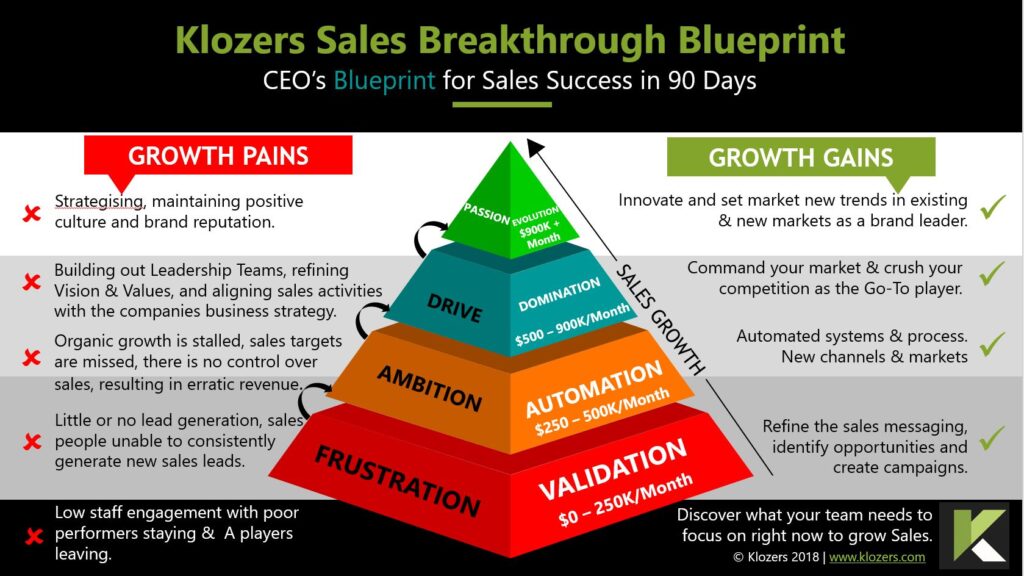
How to Sell to Big Companies. In order to sell to big companies you need to first create a shortlist of targets that meet your perfect prospect profile. Next, focus all your sales and marketing resources to research and create a unique sales approach for multiple contacts within the big company you are selling to.
What’s Inside
SESSION 1
The WHO
Introduction to Enterprise Selling
Selecting the right targets
Segmenting your accounts
Mastering the complex sale
Prep for Session 2
Get this session FREE
SESSION 2
The WHAT
The Door Opener
Right content, right contact, right time
How to write persuasive copy
The cadence of big account selling
The profitable, easy to deliver and replicate offer
SESSION 3
The HOW
What to say to Big Companies
How to control the sales conversation
The Contact Plan
Listen & Learn LIVE over the coaches shoulder
Your personal Action Plan
Course Author

Iain Swanston
Founder, Klozers
After 35 years in B2B sales Iain just loves solving sales problems.
If you’ve ever attended one of his live events you’ll know, even during the breaks and after the event he always likes talking about sales. Iain is an Author, Speaker & our Lead Sales Coach.
Iain is on a mission to make sales easier for B2B companies and their salespeople.
“In the short time I’ve been working with Klozers I’ve used his guidance to develop positive new sales activities, techniques and a mindset that has significantly helped my sales confidence. As a results I’ve already seen excellent performance benefits that are directly attributable to working to the coaching.”
Alan Wood
Scotland Director
Salesforce Marketing Cloud
“This was my first ever sales training and genuinely still the most pertinent in my sales career. Iain taught us how to take leads through the sales journey from lead to opportunity to closure, I still use these skills today and encourage my colleagues to do the same. My earnings have more than doubled since Iain gave that pertinent training and his latest blogs have been shared internally between our sales and marketing teams as the advice rings true to what we are currently working on as a department”
Lynne Hall
Strategic Accounts Manager
E-On Energy
“My coach was really flexible and was happy to talk in between my scheduled coaching slots, especially when I had burning questions and needed support fast. The debriefing calls we had after my sales meetings not only helped me understand where I could improve, they also gave me the right words to say, in the right sequence and at the right time.“
Elliott Boll
Enterprise Learning Consultant
Docebo
Get started now and get
your first session FREE
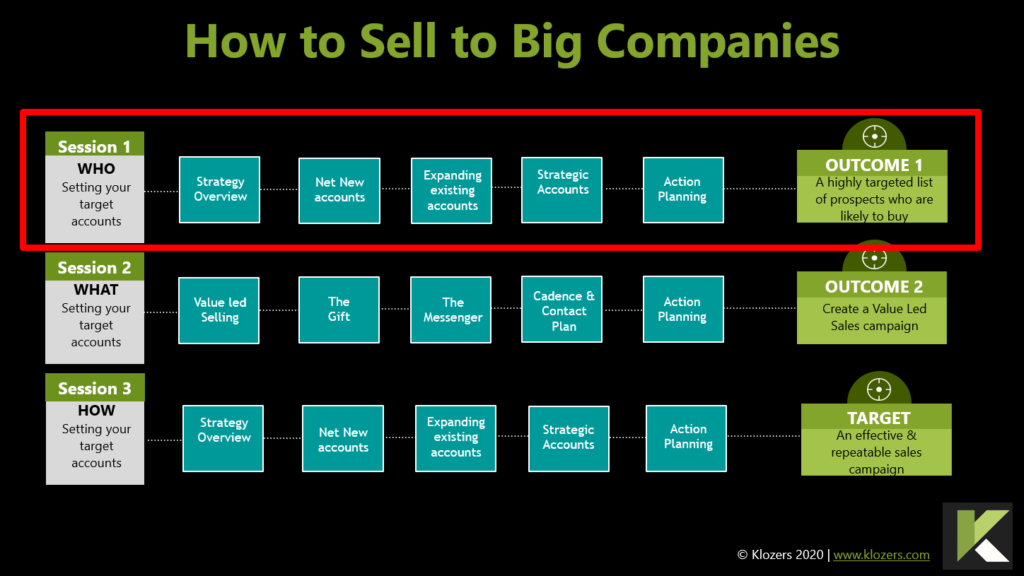
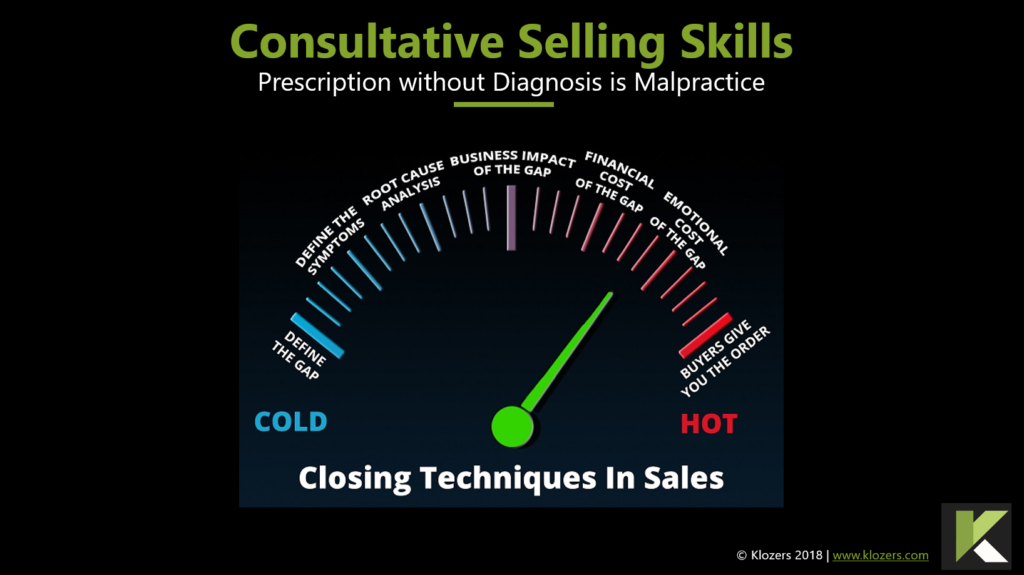
Get all the templates
you need to sell more now
Register here
Get the coaching you want, when you want it, at your desktop

“The first session was full of useful and practical sales information. I took so many notes and have come away with exercises I will carry out to help further clarify our approach to sales. I would highly recommend”
Rebecca Pick
Founder
Pick Protection
“Great training session with so much information packed into an hour. Looking forward to completing sessions 2 and 3. “
Max Anderson
Director
SuperBot Experts
Very insightful content from Klozers this afternoon. Thank you Iain Swanston for the invite to attend. This shall be hugely beneficial for our business moving forward and I am looking forward to putting my learning into practice
Laurie Wilson
Regional Sales Manager
CMP Products
Learn How to Sell to Big Companies
If you are new to sales at some stage you will want to learn how to sell to big companies. It’s common for most ambitious sales people and businesses, yet this can be a challenging or even, a near impossible experience.
For example, finding the right people to talk with (yes there will also be more than one decision maker) can be like finding the proverbial needle in a haystack, and then trying to coordinate all these decision makers can be like herding cats.
The longer sales cycles that inevitably arise from having multiple decision makers in a complex sale, then frustrate most sales people as time drags on.
The large revenues that Enterprise sales can deliver, more often than not, prove so elusive that the salespeople give up and focus on smaller opportunities, they know they can convert.
However, in some circumstances it can take the same amount of sales resources to convert a small opportunity as it does when selling the same product or service to a big company, so don’t give up just yet.
Learn More, Sell More, Earn More

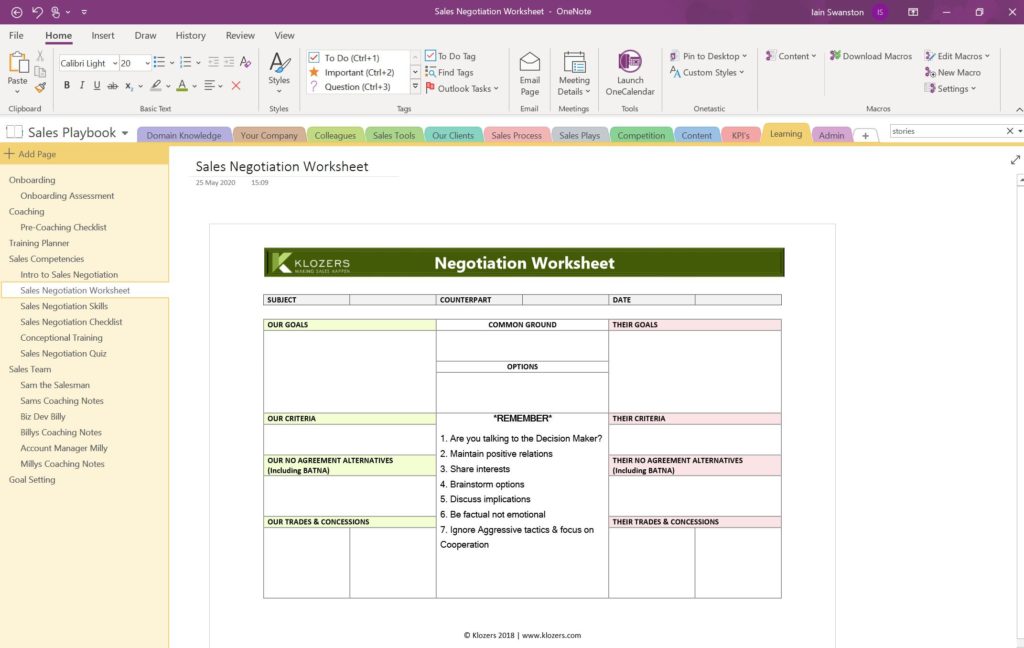
How to Sell an Idea to a Big Company
Maybe you don’t have a product or service but instead you have an idea that you want to sell. It’s the sames process and the fact is, it is possible to sell to big companies and large enterprise organisations, although it does need a slightly different approach.
The first FREE 60 minute session in this course walks you through the preparation and planning required before you approach big companies.
When you sell to big companies you may also need some additional sales resources that are not as commonly used when selling to smaller organisations, such as a Business Case, a Cost Benefit Analysis – don’t worry we’ve got templates you can use for all of these.
If this sounds like lots of work, then Yes it is, and because of this many companies will not rely on any one individual, instead they will work as a team to win large accounts. Part of that team should include Marketing in order that you can target the right people in the buying organisation, with the right messaging, at the right time.
Run the sales campaign as a mini project with scope, roles and responsibilities, costings, objectives and milestones. Needless to say that it usually makes sense to be targeting more than one big company if you are going to do this professionally, but don’t make the mistake of having too many, as the campaign can then turn into a marketing initiative which by their very nature are more generic.
The key to success is that all the messaging must be bespoke and relevant to every target which takes time, which is time that you won’t have if you have too many targets. Again this course covers everything you need.
Before you start selling to big companies there are however two important considerations you should address as follows:
1) Does your company have the capability to successfully deliver a project on the scale that a big company will require?
In most cases you will only get one chance to sell to a big company and delivering success for your first big company will also give you a reference point that will help you sell to other big companies.
2) Does your company have the financial resources required to sell to a big company?
If you buy materials in January to create stock for February and have agreed 90 day payment terms this means you have to run 150 days without being paid. Some small businesses are not sufficiently funded to do this, so be careful what you wish for.
Selling to big companies can transform your business, but like most things in life that are worthwhile it’s usually not easy and doesn’t happen overnight, but it certainly can be worth it.
Get started now and get
your first session FREE






